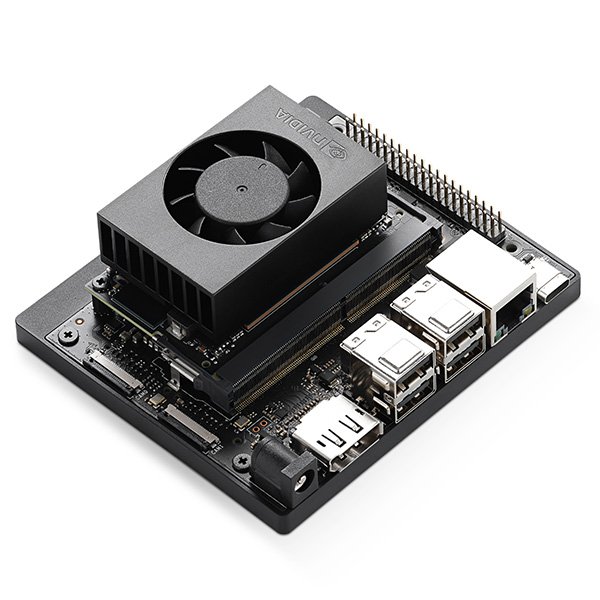
Central processors are the “brains” of humanoid robots, handling computations for controlling sensors, actuators, and AI algorithms. A central processor must efficiently manage tasks such as motion control, perception, decision-making, and real-time interaction while balancing performance, power consumption, and scalability.
Here is a list of central processors commonly used in humanoid robots, their features, and applications:

1. NVIDIA Jetson Series
- Description: AI-focused processors optimized for robotics, vision, and machine learning applications.
- Features:
- Integrated GPU for accelerated computing.
- Pre-installed with NVIDIA JetPack SDK for AI and robotics development.
- Scalable range for different performance levels.
- Applications: SLAM, vision processing, deep learning, real-time interaction.
- Examples:
- Jetson Nano: Entry-level, energy-efficient for lightweight robots.
- Jetson Xavier NX: High-performance for mid-range robots.
- Jetson AGX Orin: Advanced robotics requiring heavy AI workloads.
2. Raspberry Pi
- Description: Affordable and versatile single-board computers widely used in robotics.
- Features:
- Compact and low-power.
- Broad compatibility with sensors and peripherals.
- Large community and open-source resources.
- Applications: Hobbyist humanoid robots, education, and lightweight AI tasks.
- Examples:
- Raspberry Pi 4 (4GB or 8GB RAM options).
- Raspberry Pi Compute Module for embedded systems.
3. Intel NUC (Next Unit of Computing)
- Description: Mini PCs offering desktop-level performance in a compact form factor.
- Features:
- Powerful multicore CPUs.
- Support for Intel OpenVINO for AI optimization.
- Expandable with external GPUs.
- Applications: Advanced humanoid robots requiring high computational power.
- Examples:
- Intel NUC 11 Performance Kit.
- Intel NUC 12 Extreme for high-end robots.
4. Qualcomm Snapdragon Robotics Platforms
- Description: AI-powered processors designed for robotics and mobile systems.
- Features:
- Integrated AI Engine for efficient machine learning tasks.
- 5G connectivity for real-time data exchange.
- Optimized for low power consumption.
- Applications: Vision-based navigation, natural language processing, multi-sensor fusion.
- Examples:
- Qualcomm Robotics RB5 Platform.
- Snapdragon 865 for edge AI tasks.
5. AMD Ryzen Embedded Processors
- Description: High-performance CPUs with integrated GPUs for robotics and AI applications.
- Features:
- Excellent multitasking capabilities.
- Supports AI frameworks like TensorFlow and PyTorch.
- Compact designs for embedded systems.
- Applications: Motion control, vision processing, and AI-driven humanoid robots.
- Examples:
- AMD Ryzen 7000 Series.
- AMD Ryzen Embedded R1000 Series.
6. Intel Core i-Series Processors
- Description: High-performance CPUs suitable for multitasking and computationally intensive tasks.
- Features:
- Multicore architecture for parallel processing.
- High clock speeds for real-time applications.
- Support for AI frameworks and robotics software.
- Applications: Advanced humanoid robots, real-time control, and heavy AI workloads.
- Examples:
- Intel Core i7 and i9 Processors.
- 12th Gen Intel Core CPUs.
7. ARM Cortex Processors
- Description: Energy-efficient processors commonly used in embedded systems and robotics.
- Features:
- Cortex-A series: High performance for AI and vision processing.
- Cortex-M series: Real-time control for actuators and sensors.
- Widely supported in the robotics ecosystem.
- Applications: Lightweight robots, real-time control, energy-sensitive systems.
- Examples:
- Cortex-A76 (vision and AI).
- Cortex-M7 (control systems).
8. Xilinx Zynq UltraScale+ MPSoC
- Description: Combines ARM processors with programmable logic for real-time and AI tasks.
- Features:
- FPGA integration for flexible hardware acceleration.
- Real-time processing capabilities.
- Suitable for high-performance and adaptable systems.
- Applications: Adaptive humanoid robots, SLAM, vision-based navigation.
- Examples:
- Xilinx Zynq UltraScale+ ZCU102 Evaluation Kit.
9. Rockchip RK3399
- Description: An affordable and energy-efficient processor for edge computing.
- Features:
- Hexa-core CPU with integrated GPU.
- Supports high-resolution video processing.
- Open-source development support.
- Applications: Vision processing, basic AI, interactive humanoid robots.
- Examples:
- Rockchip RK3399 SoC.
- Khadas Edge Pro with RK3399.
10. NVIDIA DRIVE Platform
- Description: Advanced AI computing platform originally designed for autonomous vehicles, also applicable to humanoid robots.
- Features:
- High-performance AI capabilities for real-time tasks.
- Support for complex models like deep neural networks.
- Extensive SDK and AI framework compatibility.
- Applications: High-end humanoid robots, real-time decision-making, dynamic environments.
- Examples:
- NVIDIA DRIVE Orin.
- NVIDIA DRIVE AGX Pegasus.
11. BeagleBone Black
- Description: Low-cost single-board computer with extensive GPIO for robotics applications.
- Features:
- Integrated support for robotics hardware.
- Compact design with open-source tools.
- Moderate performance for control and lightweight tasks.
- Applications: Educational robots, lightweight humanoids, control systems.
- Examples:
- BeagleBone Black Rev C.
- BeagleBone AI for basic AI processing.
12. Tesla Dojo AI Processor
- Description: Custom AI processor designed for large-scale neural network training and inference.
- Features:
- Extreme parallel processing capabilities.
- Optimized for high-performance AI workloads.
- Suitable for research and cutting-edge humanoid applications.
- Applications: Advanced humanoid robots with intensive AI needs.
- Examples:
- Tesla Dojo AI System (custom integration required).
13. Kinara Ara-1 AI Processor
- Description: A low-power AI processor for edge applications.
- Features:
- Compact and energy-efficient.
- Optimized for vision and real-time inference.
- Simple integration with robotics platforms.
- Applications: Vision-based navigation, lightweight AI, human-robot interaction.
- Examples:
- Kinara Ara-1.
Key Factors to Consider When Choosing a Central Processor
- Performance Requirements: Match the processor’s computational capabilities with the robot’s tasks (e.g., vision, speech, or control).
- Power Consumption: For battery-operated robots, prioritize energy-efficient processors.
- Size and Weight: Compact and lightweight processors are essential for humanoid designs.
- Compatibility: Ensure the processor supports required software frameworks (e.g., ROS, TensorFlow, OpenCV).
- Scalability: Choose a platform that can accommodate future upgrades or expansions.
- Cost: Balance budget constraints with performance and features.
Applications of Central Processors in Humanoid Robots
- Motion Control: Managing actuators, balancing, and walking algorithms.
- Perception: Processing data from cameras, LiDAR, and other sensors.
- AI and Machine Learning: Enabling real-time decision-making and interaction.
- Communication: Handling multi-sensor fusion and external communication protocols.
- Human-Robot Interaction: Real-time speech and gesture recognition, emotional AI.
Central processors are the backbone of humanoid robots, enabling advanced capabilities through powerful and efficient computing.
